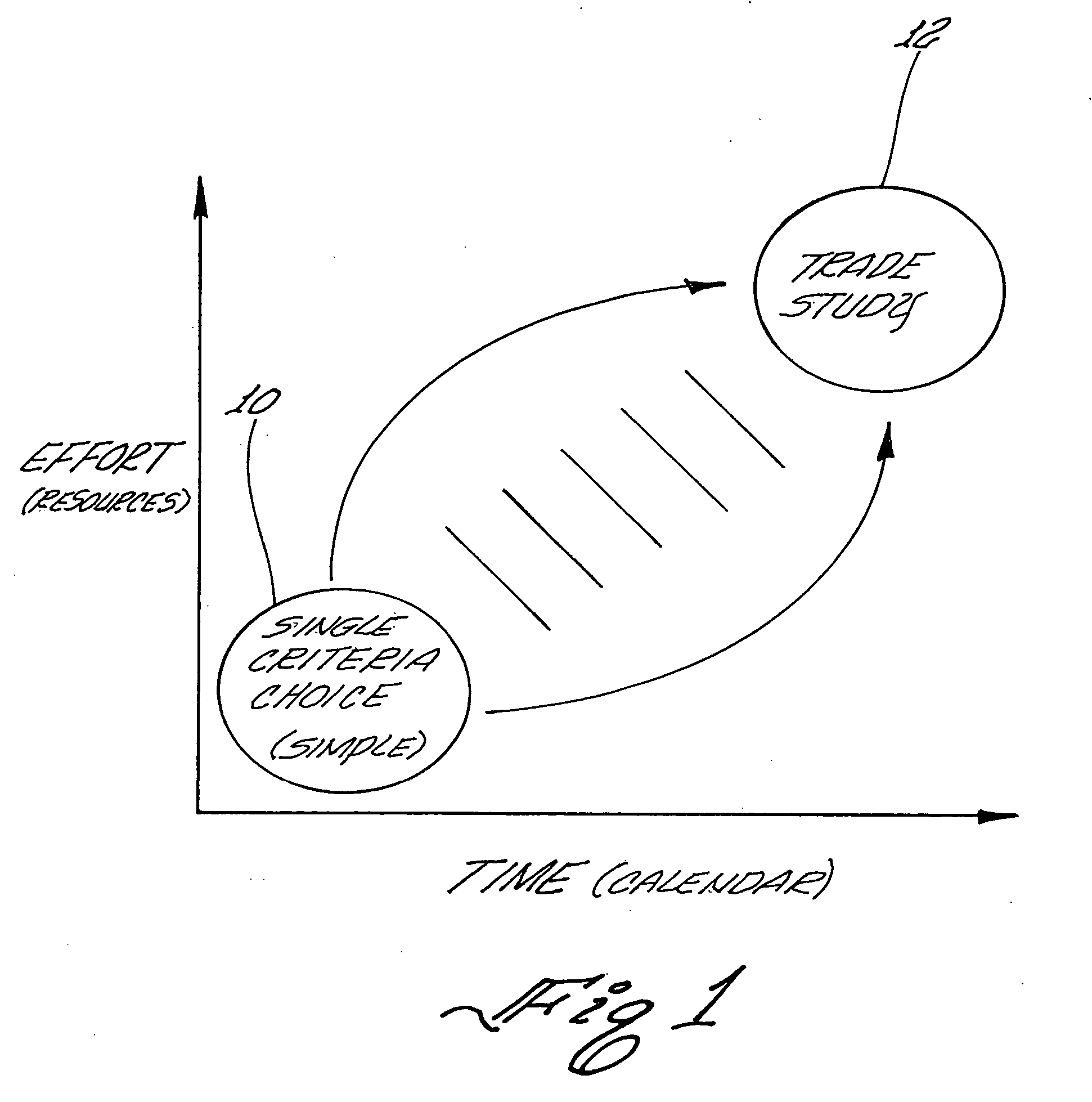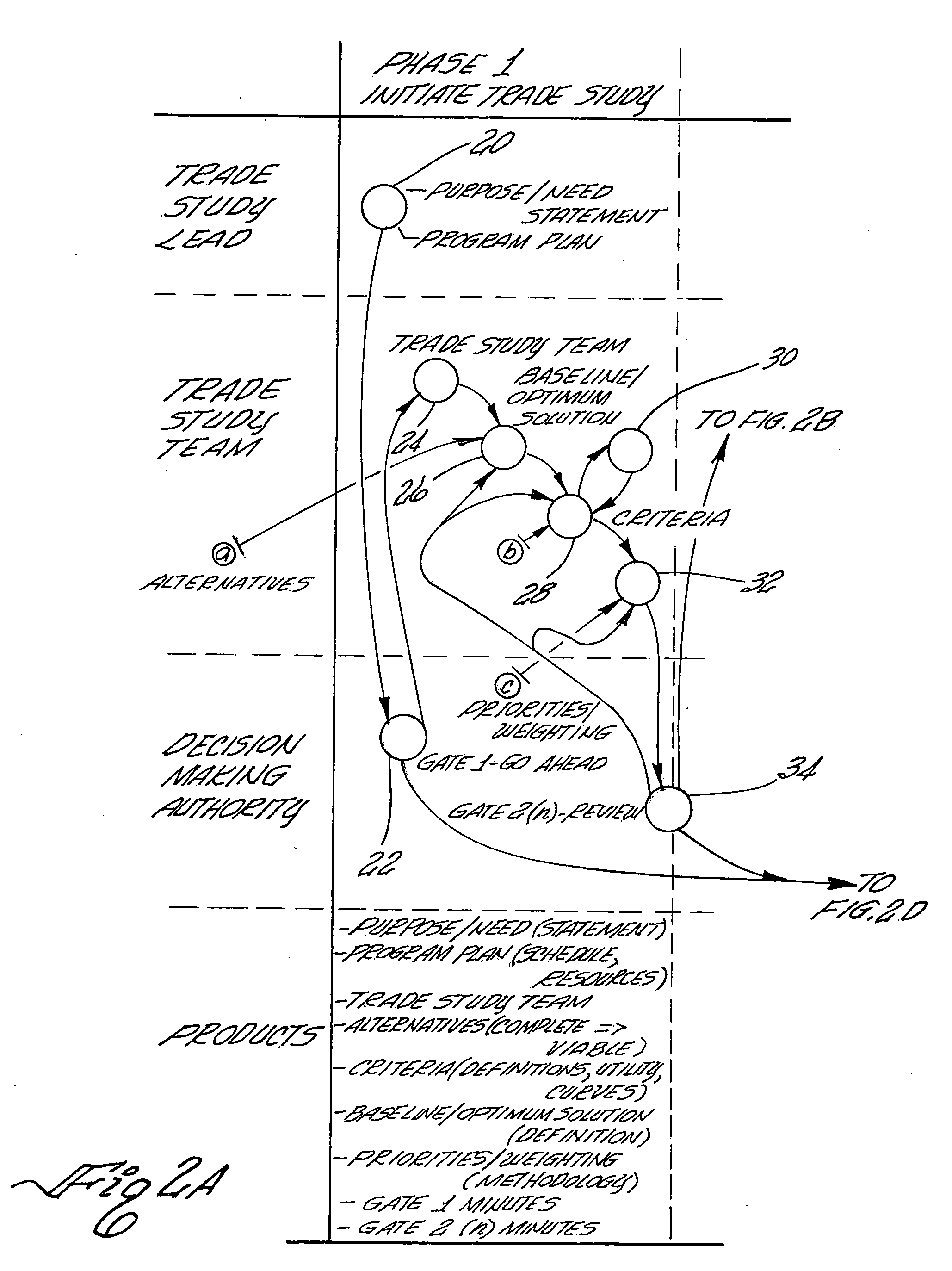Method for transforming subjective data to quantitative information for use in a decision making process
- Summary
- Abstract
- Description
- Claims
- Application Information
AI Technical Summary
Benefits of technology
Problems solved by technology
Method used
Image
Examples
Embodiment Construction
[0043] Referring first to FIG. 1, trade studies can range from a simple single criterion choice 10 to a substantially more complete study 12 with multiple products and steps. The simple trade study 10 processes are generally subsets of the more complete trade Study 12 process. Simple trade subsets are used when time, resources, or data are limited. Another reason for using one of these simple subsets is when the Trade Study under consideration is pre-defined as an Informal Trade Study. Typically, an informal trade study is used when program milestones are unaffected by any alternative selection, and all impacts including cost and schedule are contained within a single integrated product team.
[0044] Each trade study from 10 to 12 is ultimately dependent on time, resources, or data. The trade study processes referred to in FIG. 1 are briefly described in the trade study subsets section in this application. In the trade subsets section, trade study processes are tailored to meet progr...
PUM
 Login to View More
Login to View More Abstract
Description
Claims
Application Information
 Login to View More
Login to View More - R&D
- Intellectual Property
- Life Sciences
- Materials
- Tech Scout
- Unparalleled Data Quality
- Higher Quality Content
- 60% Fewer Hallucinations
Browse by: Latest US Patents, China's latest patents, Technical Efficacy Thesaurus, Application Domain, Technology Topic, Popular Technical Reports.
© 2025 PatSnap. All rights reserved.Legal|Privacy policy|Modern Slavery Act Transparency Statement|Sitemap|About US| Contact US: help@patsnap.com



